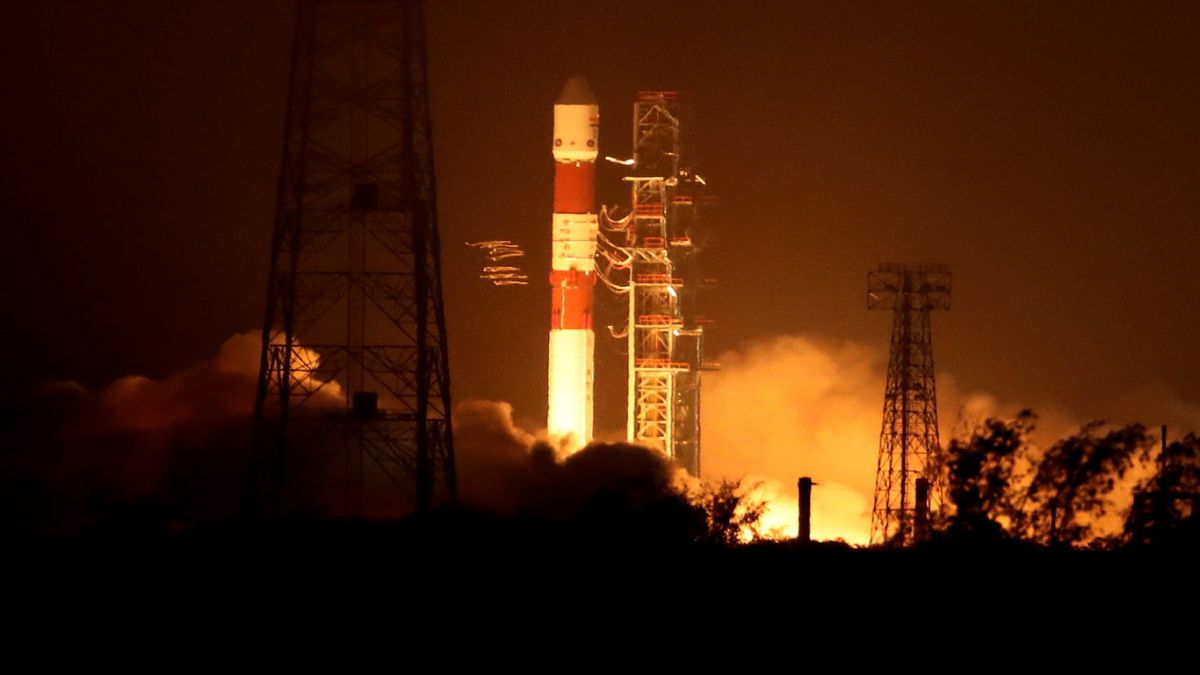India’s space agency ended 2024 on a high after Isro, the Indian Space Research Organisation, successfully launched its Space Docking Experiment (SpaDeX) mission onboard a Polar Satellite Launch Vehicle (PSLV) at 10.15 pm local time Monday.
As the skies over Andhra Pradesh’s Sriharikota lit up, Dr S Somanath, Isro’s chief, announced that they have got the “right orbit”. Soon after, the space agency posted on X, “Successful separation of SpaDeX satellites marks another milestone in India’s space journey.”
As India and Isro celebrate this milestone , we try to understand why this mission is so crucial and how it will help the space agency in the coming years.
What exactly is space docking?
SpaDeX, or space docking, is a complicated process in which two spacecraft connect while orbiting the Earth. Docking is crucial for missions that require heavy spacecraft and equipment that cannot be launched in one go. For instance, the International Space Station which comprises many modules was launched separately and then brought together in space.
If India’s SpaDeX mission is successful — Isro’s Dr Somanath said the docking is estimated to take place on January 7 — it will join a small elite club of nations that can do the same. Currently, only the United States, Russia and China are capable of carrying out docking.
Space expert Girish Linganna said to The Week, “Nasa, the US space agency, has been a leader in docking technology. Its Gemini programme in the 1960s was the first to successfully dock two spacecraft in orbit, paving the way for future missions to the Moon, such as the Apollo programme. Nasa continues to use docking technology today with the International Space Station (ISS), where spacecraft regularly dock to deliver astronauts and supplies.”
“Russia, through its space agency Roscosmos, also has a long history of expertise in docking. Its Soyuz spacecraft has been a reliable transport vehicle for astronauts to the ISS for decades. A notable achievement was the Apollo-Soyuz test project in 1975, the first international space mission, where a Soyuz spacecraft docked with an American Apollo spacecraft, showcasing advanced docking technology and international collaboration,” added Linganna.
What will happen in India’s SpaDeX mission?
India’s space docking mission will see two small spacecraft (about 220 kg each), named Chaser and Target, being deployed into a 470 km orbit.
According to Isro, once the satellites are in the intended orbit, the launch vehicle will provide the necessary velocity, which will allow them to drift away from each other. Once the two satellites are around 10-20 km away from each other, the propulsion system on Target will be fired. As a result of this, the satellites will stop drifting away.
Eventually, if all goes as planned, Chaser will reduce the distance between the two and will finally dock with Target. Once the docking is complete, the satellites will transfer electrical power between themselves.
Space experts note that while Isro’s SpaDeX mission is similar to past docking experiments what makes it even more significant is the small size of the satellites. They state the smaller the size of the satellites, the more challenging, as it requires greater precision.
They further note that what makes India’s SpaDeX even more notable is the economics of the mission. This mission costs only Rs 375 crore, which highlights India’s ability to deliver high-quality results without excessive expenditure.
Once the docking is completed, the two satellites will transfer electric power. They will later separate and continue working on their own for the next two years.
Why is Isro’s SpaDeX mission important?
India’s SpaDeX mission is vital to the country’s future space plans. The SpaDeX mission is a precursor to India’s vision of having its own space station — the Bharatiya Antariksh Station — by 2035. The station will have five modules that will be docked together in space. According to an Indian Express report, the first of these modules will be launched in 2028. However, if India didn’t have or execute the docking technology the space station wouldn’t be possible.
Moreover, the SpaDeX mission will also be vital for India’s Chandrayaan-4 mission in which Isro is attempting to collect three kilogrammes of lunar samples from a water-ice-rich area close to the south pole of the moon and then deliver the samples to Earth. For the mission, Isro will launch five spacecraft modules, which will then need to be docked.
The mission is also important for India’s human spaceflight mission Gaganyaan , which is scheduled for 2026.
With this mission, India’s space programme has ended the year the same way it began 2024 — with a bang. For the unaware, it started 2024 with a PSLV launch on January 1 and now ends with the SpaDeX mission.
We can’t wait to see what comes next in 2025.
With inputs from agencies
)